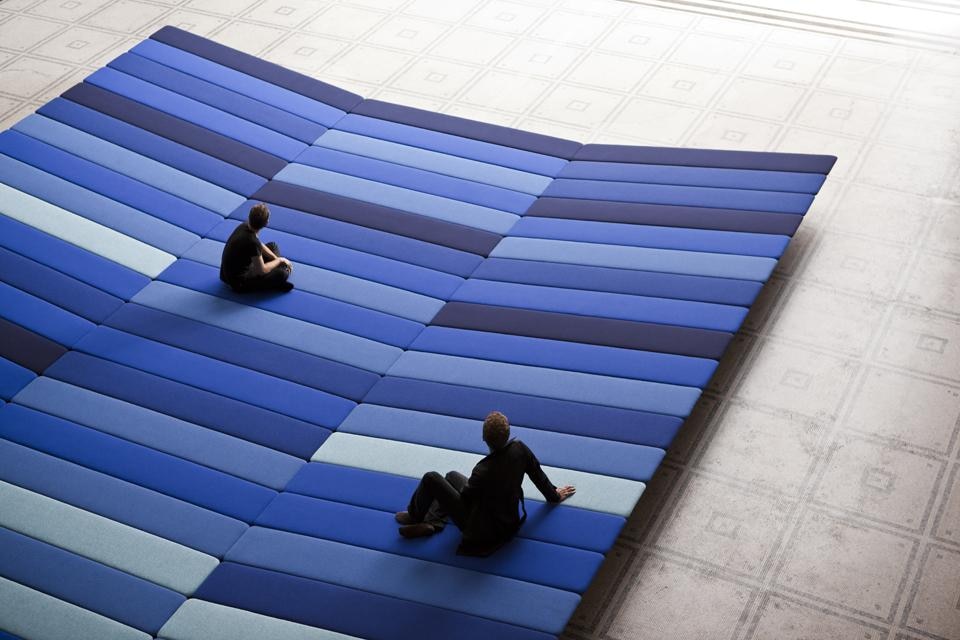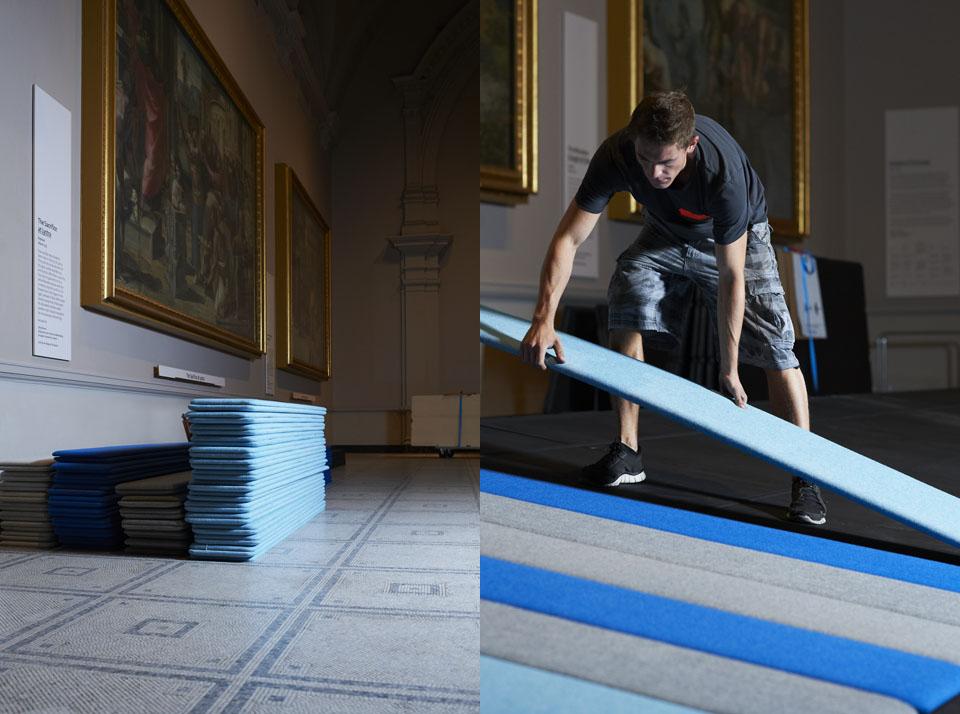Exactly what the two designers hoped would happen. In fact Ronan Bouroullec shamelessly confides that he does not love museums, and that he reacted with an initial sense of discomfort to the proposal by Anders Byriel, CEO of Kvadrat, to study an installation at the V & A during the last London Design Festival (for which it was also necessary to obtain permission from the Queen, since the museum is owned by the Court).
The object conceived by the Bouroullec brothers is typically imbued with the grace, lightness, and simplicity without devolving into cheapness (not an easy design task). It was designed to be assembled and disassembled by five people in five hours so it is well resolved technically. On the chromatic scale, which relates to the tones and palette of Raphael's works exhibited in the hall, the project is highly refined. But above all it is the scale of the object, which almost completely covers the entire floor surface, that was able to subvert the atmosphere and change visitors' attitudes and perceptions.
The challenge was to invent or define something that could put people in a different situation...We began to imagine a swimming pool in this great hall and then a sandy beach where you can lie down and admire a landscape.

Silvia Monaco


